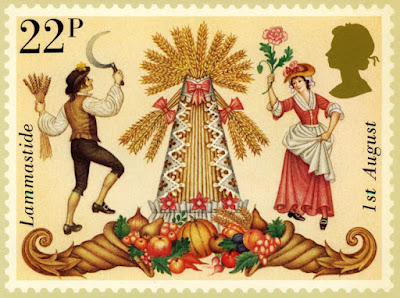The Celtic knot tying ceremony, also known as handfasting, is an ancient custom. This practice, in ages past, recognized as marriage in Scotland, Ireland, and Northern England, did not mean quite the same as what we think of marriage today. Also known by names like 'Celtic Marriage' or 'hand-wrapping' it is still practiced as one of the most popular Celtic marriage traditions.
Origin of the Celtic knot tying ceremony
How did this custom start? To understand this, we need to recognize that in the past, the gesture of holding hands was a sign that the couple’s relationship was exclusive and while exchanging rings was a custom, not everyone could afford them. For those who couldn’t afford rings, a cord worked just fine.
As for the origins, the Celtic handfasting tradition can be traced back to 7000 BC when the Celts migrated from Europe and settled in Britain. They brought the ritual with them, and the practice continued well through the Tudor Period. Two people came to be married, and their hands were fastened together with a cord or strip of material. The Celtic knot ceremony publicly declared the couple’s intention to marry one year and a day in the future. In the meantime, they lived together as husband and wife.
Lughnasadh harvest festival
As long as we are talking about this custom, another bit of related trivia is the ancient Irish tradition of a festival held on Lughnasadh (associated with the god Lugh). The festival was held to commemorate his marriage and was practiced until the nineteenth century. During this festival, men and women gathered on opposite sides of a high wall. Men stood on the North side and women on the South. The women stuck through hands through holes in the wall. Men came along and chose one of the hands. These new couples formed temporary partnerships called “Tailtian marriages.” They were solemnized at the festival and the couples lived together for a year and a day in a trial marriage. After the time was up, they decided whether or not they wanted to be permanently married.
Why a trial marriage?
Ancient Celtic law recognized this union as a trial period. Why? Speculation was that the making a public declaration of intent to marry let suitors know both parties were no longer available. Plus, the probationary phase offered time to ensure the couple was ready to take on the commitment of marriage.
I think of it this way, instead of an engagement ring, they made their intentions known with this Celtic knot tying ceremony. It symbolized the joining of two lives. And my two cents is that a knot can be temporary. It can be untied.
Celtic wedding knot ceremony today
The Celtic wedding knot ceremony is a popular tradition in weddings today. As you can probably guess, the Celtic hand tying ceremony is where we get the modern expressions of ‘tying the knot’ and 'bonds of matrimony.' Often it is practiced across traditions and cultures as a unity ceremony with specific handfasting colors incorporated in the cords to represent personal meanings to the couple.
Photo credits: Etsy, Pinterest, Etsy





